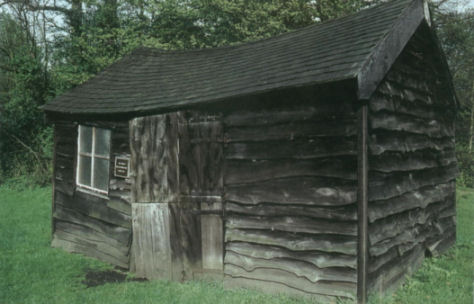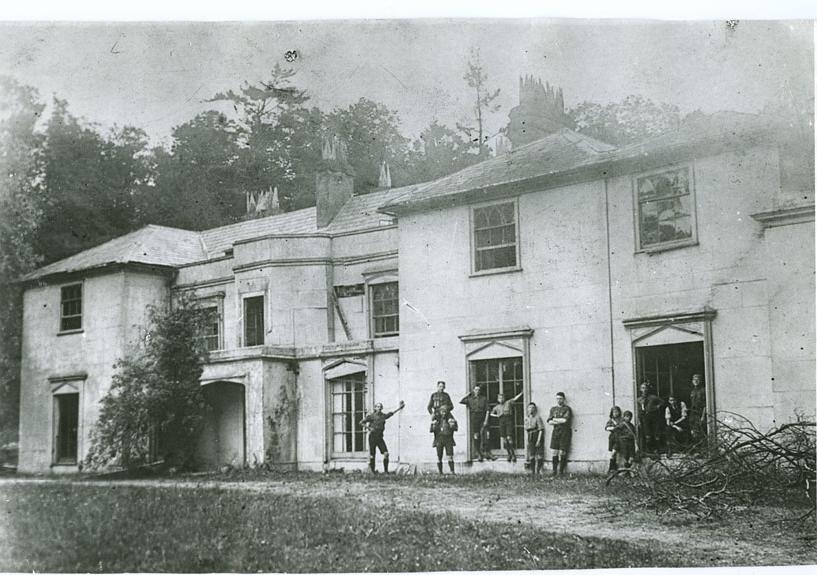For millions of Scouts from across the world Gilwell Park is famous as the home of training and camping. Leaders from across the world are still awarded the Wood Badge as a sign they have completed their Leader Training in accordance with the Gilwell tradition started by Baden Powell and on receiving the Wood Badge they become members of the 1st Gilwell Park Scout Troop, which is the largest Scout Group in the world.
A Brief History
1407 – 1911
The first recorded owner of the land that can now be identified as being part of the Gilwell estate was back in 1407 was a one John Crow who owned several parcels of land in the old Parish of Waltham Abbey, Essex and called this land Gyldiefords. This record can be found in the Harleian records which can be found in the British Library.
In 1422 the Court record show the ownership had changed to a Richard Rolfe but there is no record as to when this change of ownership actually took place, but the records show that on his death he had left Gillrolfes, an 8 acre estate, as it was now known to his family. Rolfe had changed the name to his own family name as was quite common in those days and added Gill to the front and old English word for Glen. Shortly after Rolfe’s death the land was divided into two field areas known as Great Gilwell & Little Gilwell (well comming from the Old English Wella meaning spring). At the same time Richard Osborne purchased the adjacent land and built a house called Osborne Hall that now stands on the site of the “White House” (more about this later). The house was not has grand as the “White House”, but was of considerable size and well constructed because it remained standing for the next 300 years.
Over the next 250 years the estate changed hands many times and apart from the occasional increase or decrease in a few “roods of land” (Old English word for a quarter of an acre) very little changed.
In or around 1736 Gilwell crossed paths with the infamous Highwayman “Dick Turpin”, Legend has it he actually hid in the forest the borders Gilwell as well as the caves at High Beech near by. The connection with Gilwell come in the way that on the far side of Gilwell Green there stood some wooden huts & cottages that belonged to estate workers of the neighbouring estate of Lord Sewardson and it was in one of these cottages the Turpin’s young bride Ester Palmer lived and that his son was born in.
In 1754 the estate grew again when William Skrimshire of London purchased a number of parcels of land including Great & Little Gilwell and half of Osborne’s land including the land the hall stood on. The total purchase was 23 acres. It is thought this around the time the “White House” was built as timbers in the building have been dated to around this time so it is assumed that Skrimshire demolished Osborne Hall and built what is know called the “Whit House”. By 1771 the land had been sold to Lenord Tresilan along with another 3 arces which by 1778 had with a purchase of an traditional 8 acres had increased the size of the Estate to 34 acres.
The land changed hands a number of times until it came into the ownership of William Gibbs in 1858, The Gibbs family thou not poor ended up not having the money needed to keep the estate in it’s former high standard and slowly the estate started to full into disrepair. When Gibbs died in 1900 is window and children moved out of the main hall and into the gardeners cottages, In 1905 Mrs Gibbs decided to move, while the eldest son remained and in 1907 he sold off the northern most 8 arces of land known as “Gillwellbury estate”, He lived on the farm untill 1911 when this was sold to a Reverand Cranshaw.
1919 – 1940
In 1919 the land was purchased for the Scout association by a Publishing Company from Edinburgh’s owner a one William F. de. Bois Maclaren. Maclaren was a Scout Commissioner from Rosneath in Dumbartonshie who was in the process of expanding his business to Fleet Street in London and while on one visit was dismayed to see Scouts in the East end trying to run their programme in the back streets and on waste land.
In November 1918 he contacted BP and offered to provide money to purchase a camping ground for the Scouts of the East End. He had originally planned to purchase 600 acres in Ashdown Forest, Sussex, but soon realised Sussex was to far from London. The search was now on to find something closer.
BP refereed the matter to P.B. Neville Commissioner for East London, who me with Maclaren, who agreed to commit £7000 to the project. It was decided to concentrate their efforts on the Epping Forest and Hainault Forest areas. Parties of Rover Scouts searched both areas for sometime without success until one day a young Assistant Scoutmaster called John Gayfer suggested Gilwell Hall, a place where he went bird watching. Gayer contact Neville who visited the site and was impressed with what we saw even thou the site was in such a rundown state, he manged to find a torn down board with the name of the Estate Agent on it on contacting them he found the property was on the market for exactly £7000. The estate at the time was 53 acres in size and was purchased for the Scouts.
The clean up of the site now begins
Rover Scouts starting the work on Maundy Thursday 1919 (April 17), they found the old house in poor repair and the grounds over grown.
The ground was so wet they couldn’t pitch their tents so spent the first night in the gardeners shed in the orchard which they christened the “Pigsty”, this building still stands here today.
Regular working parties of Scouts spent their weekends clearing the site, the amount of work and time needed to restore the house had been under estimated but Maclaren so keen on the project committed an extra £3000 to the project.
Maclaren had only wanted the site for camping for Scouts, but BP had a vision of a training Centre for Scoutmasters and was able to convince Maclaren that the two could sit side by side on the same site.
The site was officially opened on the 26th July 1919 by Mrs Maclaren. Between now and the outbreak on World War II a number of new buildings were built for use by both scouts and leaders and many improvements to the site were made.


1940 – 1945
The estate was requisitioned by the War Ministry from 1940 to 1945 as a local command, training, and ordnance centre. for anti-aircraft artillery crews and the headquarters of the local defenses protecting factories in Enfield and Waltham Abbey. Little remains at the estate from World War II, except the hole created by a 500 pound bomb dropped by the Luftwaffe. It has been enlarged a number of times and is now used for canoeing and other water activities.
More content to be added to this page shortly
